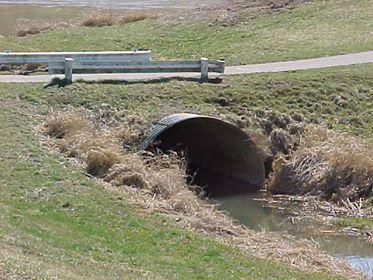Bridges and culverts are important parts of the infrastructure of our civilization. Both provide passage for transportation, usually over running water, and so it is common to confuse them with each other. But various factors, such as length, purpose, the complexity of design, building components, and structure, are the distinguishing elements among bridges and culverts.
Bridge
A bridge is a structure that carries a roadway or railway over a physical obstruction, such as a river, lake, or even another road or railway.

Culvert
A culvert is a tunnel structure that allows running water to pass under a roadway or railway. Culvert is also useful for water drainage or bridging the gap over a physical obstruction.

Bridge vs. Culvert
The purpose of both bridges and culvert is providing a transportation route over obstructions, which is why they may seem the same, but the span length chiefly differentiates between the two structures. Other factors also set culverts and bridges apart from each other, like terrain and design.
Some other differences between bridges and culverts are given below:
| Bridge | Culvert | |
|---|---|---|
| 1 | A bridge is a passage of transportation (for people or vehicles) over a large body of water or physical obstruction. | A culvert is generally a tunnel-like structure that allows water to pass under a roadway or railway. |
| 2 | The basic components of a bridge are superstructure (supports load), substructure (transfers load to foundation soil) and deck (transfers surface load to other components). | The components of a culvert are comparatively simpler and include concrete boxes or cells (single or multiple), pipes, a top deck or slab and supporting parts. |
| 3 | Bridges are constructed at a height more than 20 feet. | Culverts are built at less than 20 feet high over the obstruction. |
| 4 | A bridge spans from 6 meters (minor bridges) to more than 120 meters. | The length of culverts is typically not more than 6 meters. |
| 5 | Piers and abutments are the supporting structures of a bridge. | Culverts are usually embedded in the soil which bears the major portion of the culvert load. |
| 6 | A bridge contains no floor. | A culvert is an enveloping structure that consists of two sides, a roof, and a floor. |
| 7 | The construction of a strong and deep foundation is very important in building a bridge. The foundation along the entire breadth supports the bridge. | No deep foundation is required for a culvert. |
| 8 | A bridge is usually a linear and straight passage. | Culverts are totally enclosed structures that can be semi-circular, rectangular, elliptical or pear-shaped. |
| 9 | The structure and design of a bridge are elaborate and complex, hence its construction requires a substantial budget. | The construction of a culvert can be done with a low budget. |
| 10 | Bridges are usually constructed at the site or pre-constructed in smaller parts. | Culverts can be pre-constructed or built at the site (in situ culverts). |
| 11 | Construction of bridges generally requires a lot of time and manpower. | Culverts are simpler in structure and design, so it can be constructed with less time and labor. |
| 12 | Bridges provide an easier route of transportation that saves time and reduces distance. | Culverts prevent water logging, flood, and erosion, and allows water to flow its natural course under a roadway or railway. |
| 13 | A bridge is built over a body of water that is large and has variable flow. | A culvert is constructed when water needs to be conveyed through tunnels or channels under a roadway. |
| 14 | Bridges can withstand heavy and speeding vehicles. | Some culverts, like box culverts, have sharp corners that are unsuitable for high-velocity vehicles. |
| 15 | The only way of transportation is over the deck of the bridge. | A culvert can be constructed to accommodate roadways both over and under the deck (e.g. a culvert built over another road or railway). |
{adselite}

